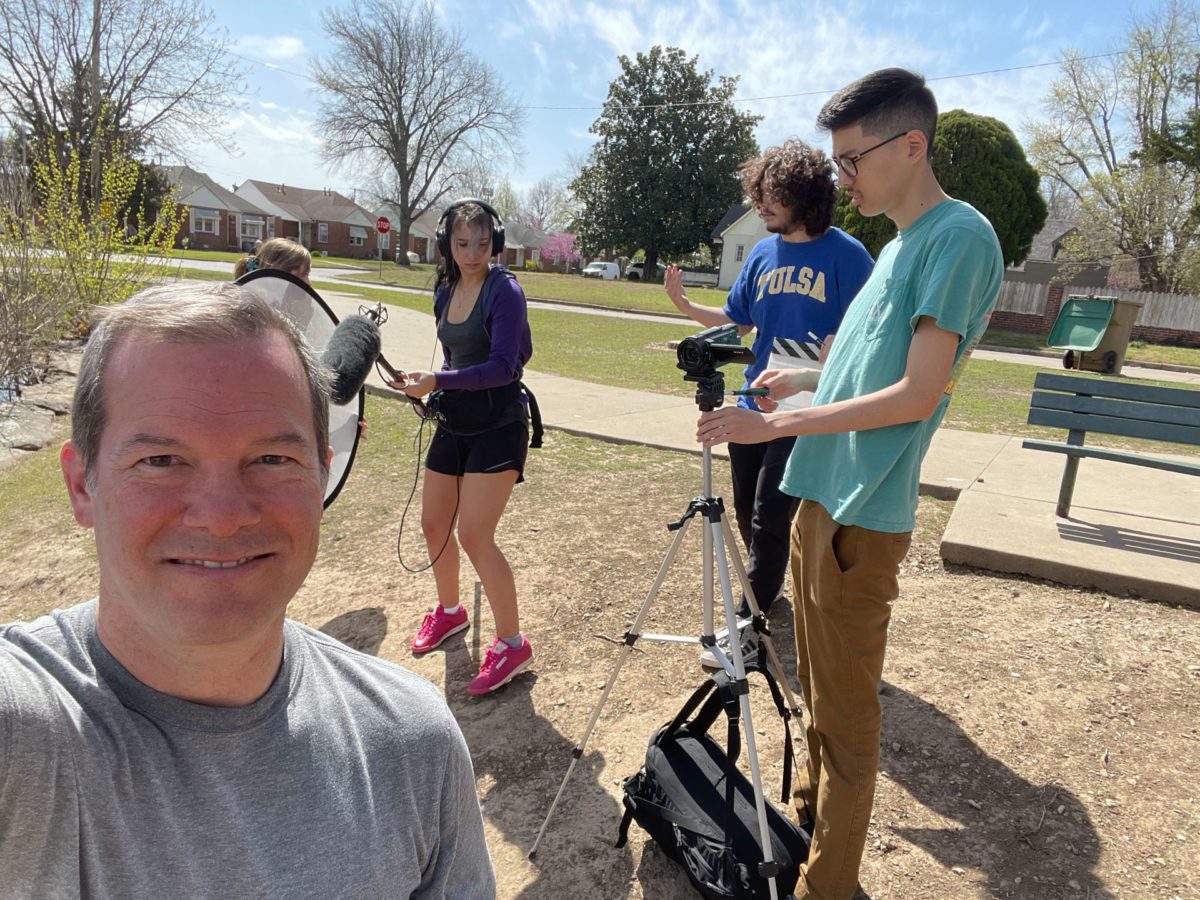Schooling
Film production is growing in the Sooner State, and with that, educational opportunities to learn more about the sector have grown, too.
“With the increase in production statewide, I think more schools are recognizing there is appetite for film instruction,” says Jeff Van Hanken, Wellspring Associate Professor and chair of the Film Studies department at The University of Tulsa.
With more production work available, moving elsewhere to ‘hit it big’ or get involved in the industry is no longer the only option for people. The courses that universities offer can also be “excellent preparation for a wide range of production-based industries,” says Van Hanken.
Oklahoma houses several universities that provide film courses and four year degrees in the subject, such as TU, the University of Oklahoma and Oklahoma Christian University.
Van Hanken hopes the program at TU continues to grow each year with expanding classes.
“With the right resources, the sky’s the limit. But we have to keep growing,” he says.
He plans to teach a new course next year called Coding and the Arts that is based on a piece of art he designed for downtown Tulsa.
“The piece incorporates an interactive element that responds to data,” he explains. But for courses like that to exist, the core of any school’s program – the pure cinema – must be strong. Classes like Intro to Film History, Screenwriting, and Film Scoring classes keep that program humming along.
“It takes effort,” says Van Hanken. “My colleagues in the department and across the college are also constantly doing new research and offering new courses. Film nicely partners with a wide range of disciplines, from business to art to computer science.”
But after you’ve got the degree, where do you go from there?
“In terms of preparation, our students not only have the opportunity to write and direct original films but also to try areas such as camera, sound, production management and editing,” says Van Hanken. He also stresses being professional.
“Early is on time, on time is late, and late is … you can fill in the blank,” he says.
Getting Into Acting
Let’s say you want to be under the spotlight, not behind the camera. Where do you start?
First things first: You’ll need to get a headshot and resume ready to go. If you don’t have many credits to your name, don’t sweat it. According to backstage.com, “you must focus on your strengths and not your weaknesses.” Use whatever you have, from plays to short films shot with friends; anything that shows off your skills is important.
You’ll also need a good headshot to show to casting directors. While it might be tempting to have a friend with a camera take your headshot, the investment in a professional is worth it. Do some research and make sure your chosen photographer has what you’re looking for.
Backstage.com advises: “Before committing to a session, have a conversation to make sure you have compatible visions for the final product.”
Lastly, you’ll want to sign up at websites like Backstage and Actors Access. Here, you can upload your headshots and resume and begin looking for roles. Freihofer Casting, situated in Norman, is a solid resource for staying in-the-know about upcoming film and TV shoots. You can sign up for their newsletter to stay connected.
Behind the Scenes
If the production side of film is more interesting to you, there are plenty of jobs in the market.
“First of all, anyone can work in the film, television and media production industry, and right now is the perfect time to join the action with the current increase in production activity across Oklahoma,” says Tava Sofsky, director of the Oklahoma Film and Music Office.
She encourages people to continue creating their own content whenever possible; however, “most people have a skill set that will easily translate to working as crew. Typically, getting your foot in the door as a production assistant is one of the best ways to learn about the various positions and departments on a production.”
Film goes very well with a number of skills.
“If someone has a skill set or trade they would like to apply to working in Oklahoma’s film and television industry, there are many Film 101, Set Ready and Intensive Workshops for the various trades that can be accessed on our website under educational resources,” says Sofsky.
It’s often said in film that it’s all about who you know, but Sofsky disagrees.
“While it does help to know people, I would say work ethic is just as important if not more,” she says. “Oklahoma is known for having a first-rate local film crew.” She supports taking a Film Etiquette course, which is offered in state, as well as signing up for the office’s newsletter.
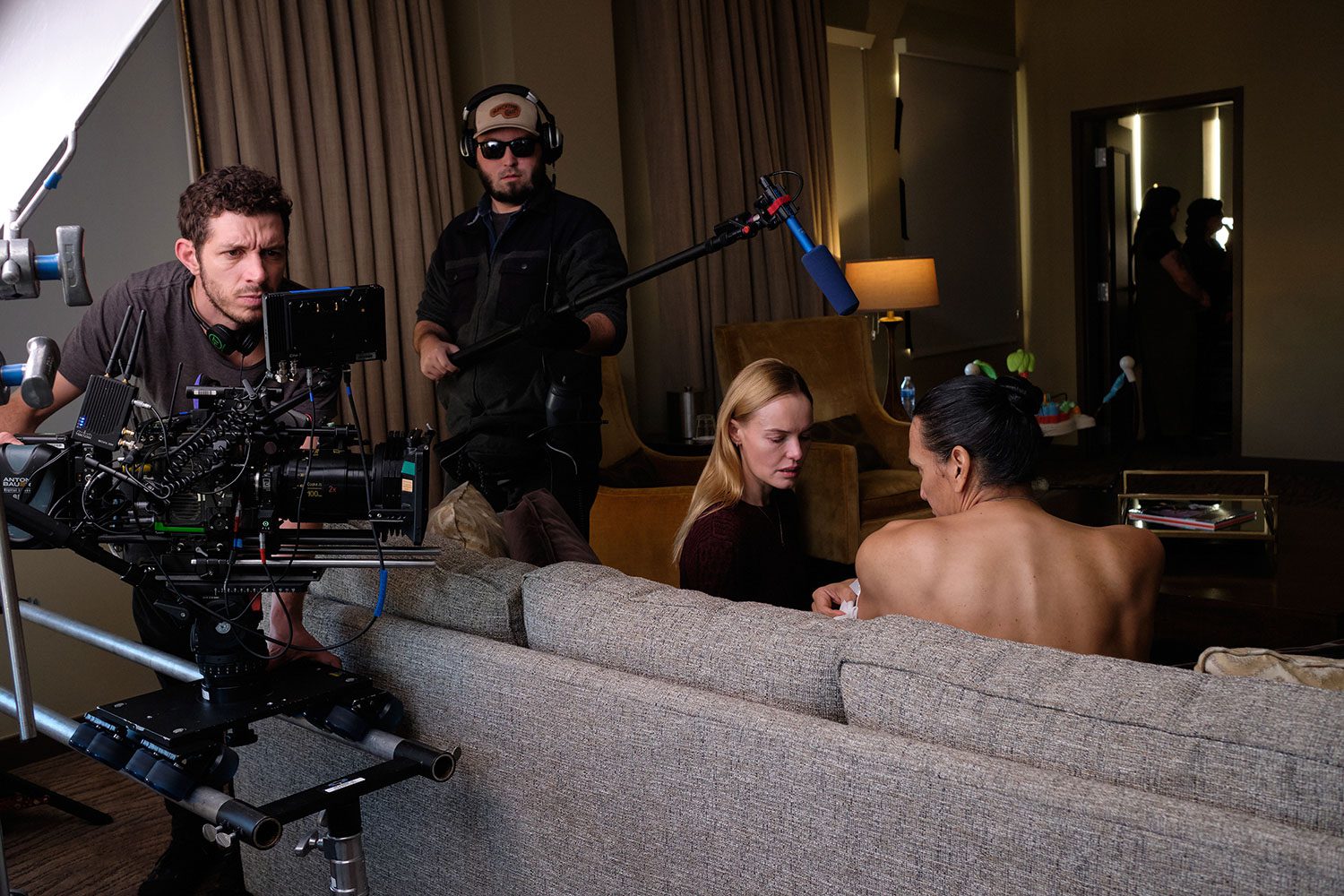
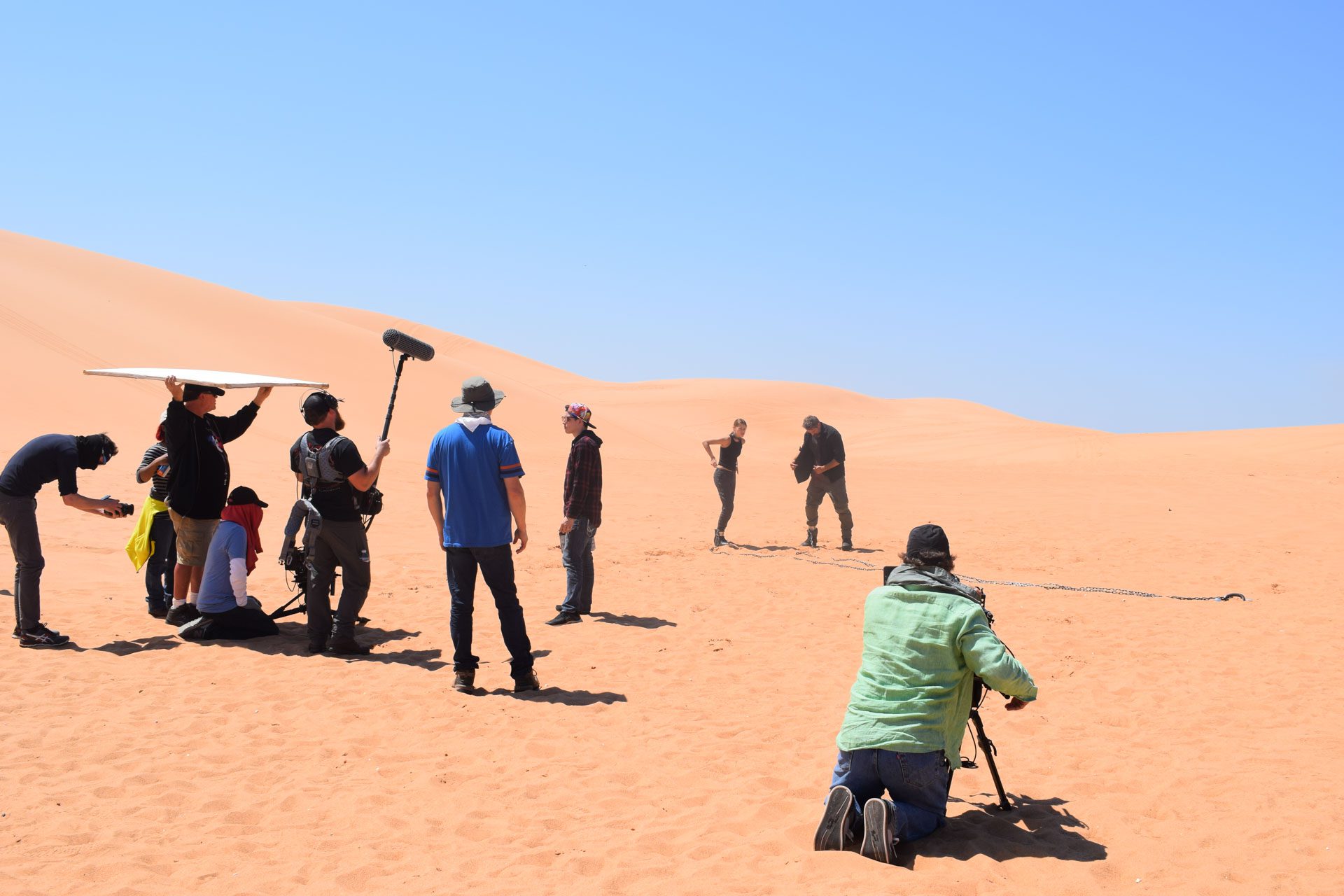
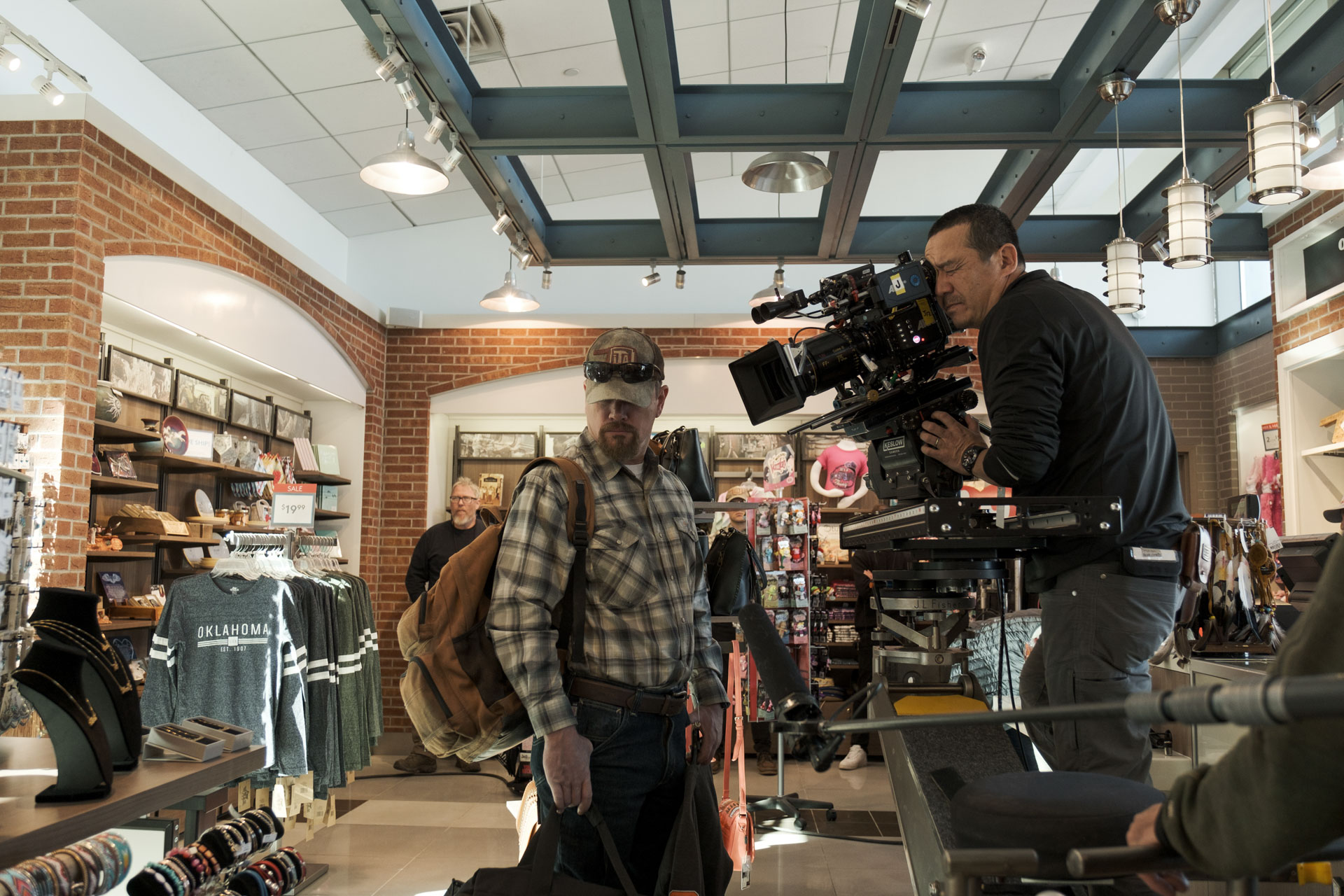



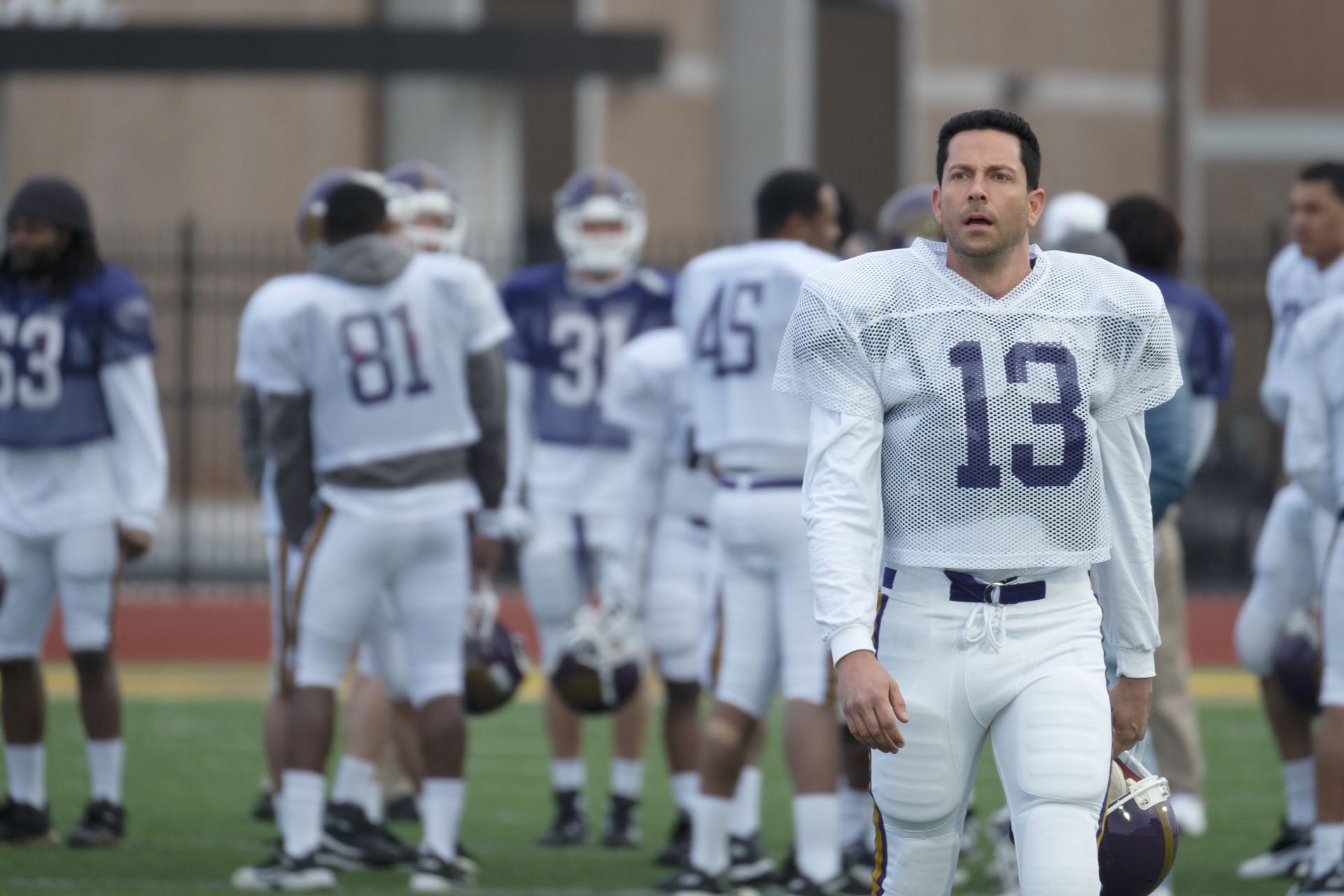
Audition Etiquette
So you’ve landed an audition! Backstage.com offers some tips for nailing it.
1. Remember the reader isn’t acting with you.
“The reader is only there to give you someone to play off,” says Backstage. Don’t approach or touch them. You’re doing the acting, not them.
2. Always bring you sides/script unless you’re told not to. It’s good to have it memorized, but “even if you know the lines, hold the sides – unless you’re explicitly told not to.”
3. Doing self-tape auditions is far more common now, so remember to light and frame your shot. Seeing and hearing you are very important to a casting director. “Make sure you’re the focus of the shot against a blank background.”
4. Backstage also reached out to several actors about on-set etiquette, and Jon Lovitz summed it up best: “Treat everyone on the set with respect. You are neither above nor below them. You’re all equal.”
Equipment Lingo
Once you’re on set, you’ll need to know the lingo that goes with it, especially if you’re working crew.
Boom Pole – A long pole with a microphone attached, held above the actors at a distance to record sounds while staying out of the shot
Shotgun Mic – A microphone attached the to the boom pole, used to record audio
Shock Mount – A device attached to the microphone to prevent accidental sharking and rattling from ruining a take
Gaffer – The chief
electrician on set
Audio Cables – Cables used to connect cameras, lights and mics, often wrangled into circular shapes to avoid tripping
Martini Shot – The final shot set up of the day
Last Looks – Occurs when the camera department is ready to film, so other departments do a final check before filming begins
Rack Focus – The changing of the lens’ focus from one subject to another within the shot, often blurring one and bring another into clearer view
Steadicam – A handheld camera designed for smooth, steady shots using a mechanical harness
Diffusion – A white material used to soften the light source
Gel – A transparent colored filter applied to the front of a light to manipulate the color output
Shot Bag/Sandbag – A heavy bag used to weigh down stands






















